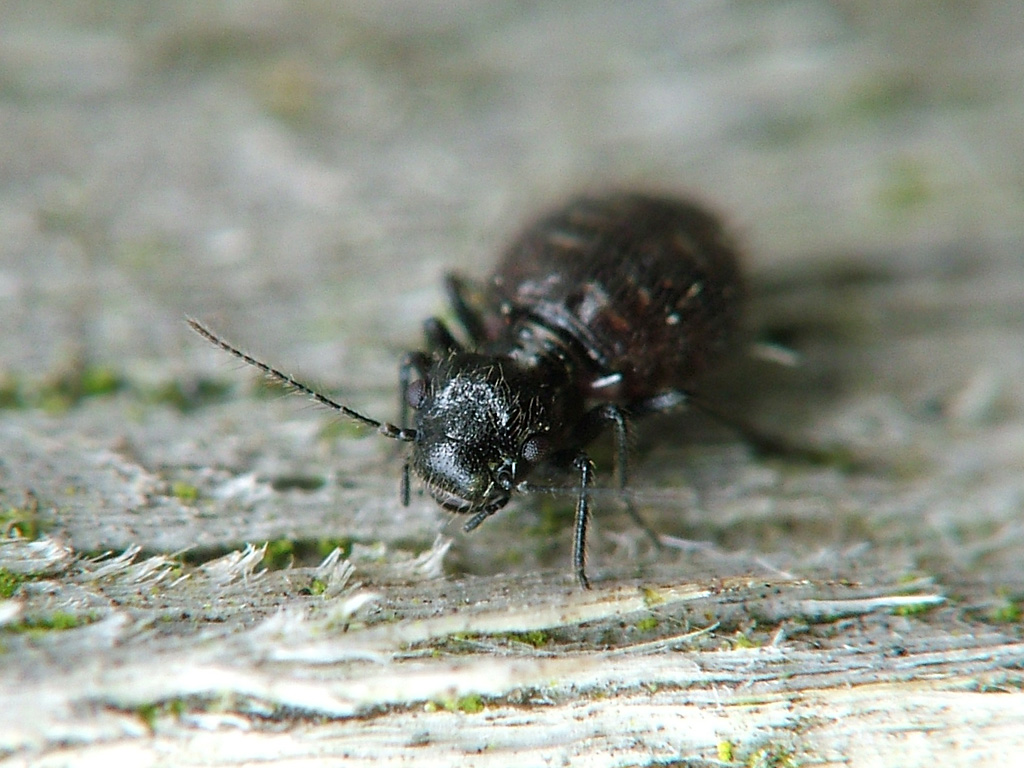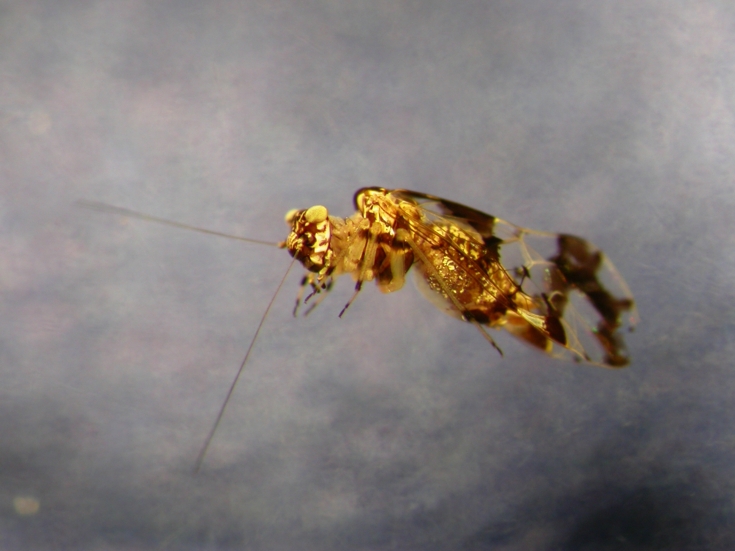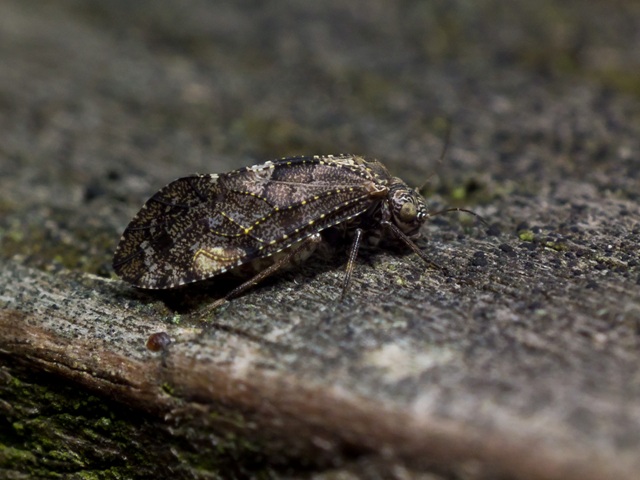Phylum Arthropoda
Subphylum Hexapoda
Class Insecta
Order Psocoptera
Common names: psocids, booklice, barklice
Overview
The Psocoptera, or booklice, are a small order of insects with a characteristic appearance due to their large rounded head that bulges out at the front (due to a bulbous postclypeus), and soft-looking, swollen abdomen. Booklice have two pairs of membranous wings which at rest are held tent-like, sloping over the body; wing venation is simple. When disturbed, psocids run or fly away; however, they are weak fliers, flying only for short bursts before landing. Within some species, wing length varies between the sexes (polymorphism): some individuals (more often females) are either wingless (apterous) or have reduced wings (brachypterous). Booklice have chewing (mandibulate) mouthparts; silk glands near the mouth; long, segmented antennae; and are small to medium-sized, ranging from 1�10 mm in length. Typically, they are dull grey or brown in colour and sometimes may be patterned or covered in debris stuck to hairs on their body, affording camouflage against the background. Psocids are sometimes mistaken for aphids (Hemiptera), but can be distinguished by their biting rather than sucking mouthparts.
Distribution and diversity
Psocids occur across Australia in a variety of habitats. Worldwide about 3,500 species have been described; with 293 species in 89 genera from 26 families are known from Australia, including several cosmopolitan species. However, there are many undescribed species in collections and it is predicted that many more remain to be collected.
Life cycle
Mating in most psocids is preceded by a mating (nuptial) dance performed by the male. Sperm transfer is direct and the female lays her eggs either one at a time or in clusters under bark or leaves; she may encrust them with detritus or cover them with silk. Nymphs generally resemble adults but lack wings and usually develop through 5�6 moults before maturity. Parthenogenesis occurs in a few species.
Feeding
Booklice feed mostly on organic matter such as unicellular algae, lichens, fungal hyphae, spores, and dead insect and plant fragments. A few species have become pests and feed on stored products and paper materials, from which behaviour derives the common name 'booklice'.
Ecology
Little is known of the biology and ecology of native Australian species. In general psocids are found in a wide variety of terrestrial habitats. Adults and nymphs occur on foliage or branches of trees and shrubs, on or under bark and rocks, in leaf litter and caves, inside houses, and in stored products such as grain. They have also been recorded from ant and bird nests and bee hives. The nymphs of one Australian species make short tunnels in wood. Species with a wide food range occur across multiple microhabitats, but others with more restricted diets, such as those that feed only on algae, lichens or fungi associated with a specific substrate such as dead leaves, are more restricted to these specific niches. Most species are solitary but will form aggregations, for example where food is abundant or in loose family groups of adults and nymphs. Some live under communal silk webs. Some species can make �clicking� noises (stridulate); this involves rubbing the wing and abdomen, or the abdomen against the substrate. Booklice can be pests of stored products and in houses and can cause allergic reactions in people coming in contact with infested material. However, due to their diet and abundance, they are important in the food web for breaking down microflora.


Unidentified psocid from Randsome Reserve, Queensland, Australia.
Image credit: Photo by Erich S. Volschenk
� Western Australian Museum









